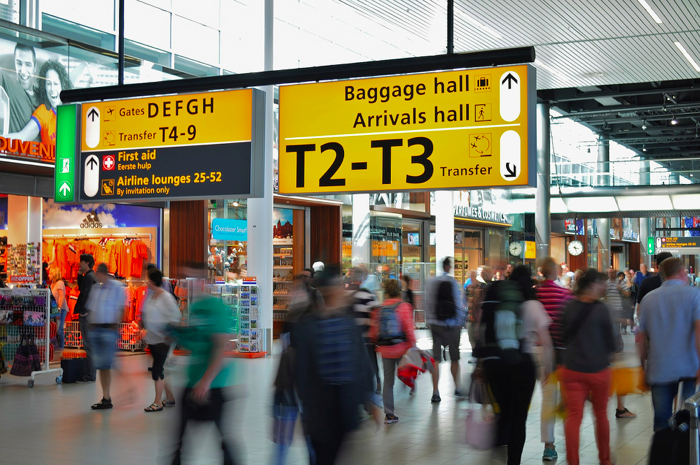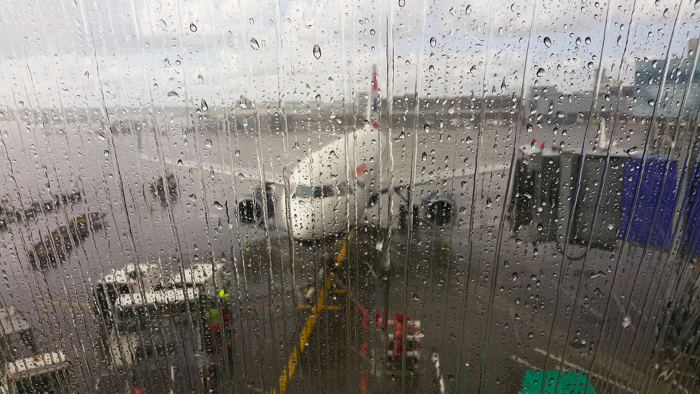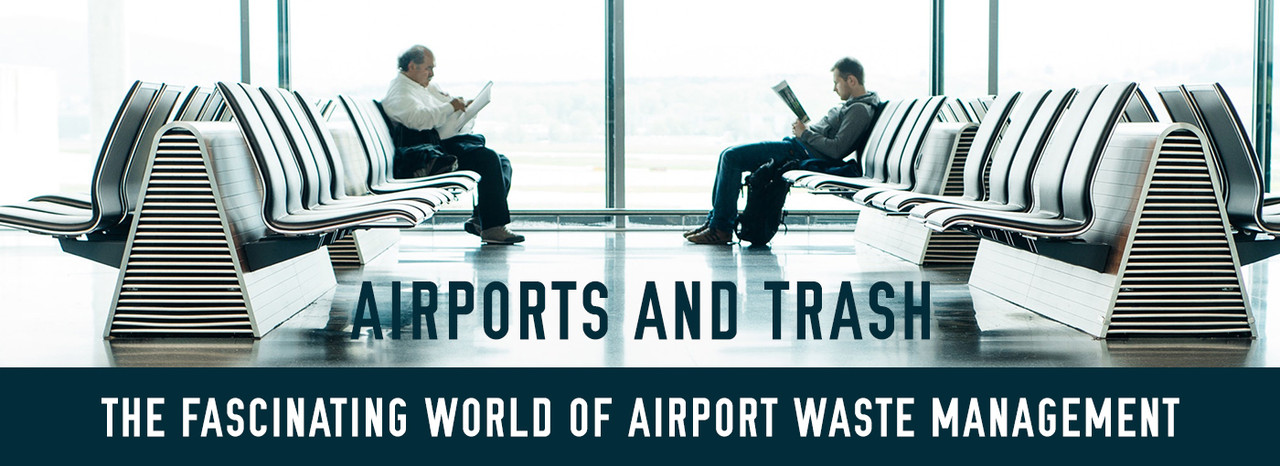It’s a scene that plays out a million times a day in airports near and far: running late for your flight, you decide to grab a quick bite and maybe a bottle of water. You eat while negotiating an endless maze of concourses and obstacles, casually throw your trash in a nearby receptacle, and give it no further thought as you rush to catch your plane.
The story of your trash, however, has just started. An airport can produce millions of pounds of trash in a week. While each airport has different procedures in place to handle this trash flow, there are some common, shared strategies that point to a consensus on how large institutions can both manage and mitigate solid waste.
This article will look at the nature of airport waste, and the strategies in place for its disposal.

(Courtesy: Pixabay)
Types of Airport Trash
To understand the gravity of the waste problem at American airports, it is worth considering the types of trash airports produce. Per the FAA, airport waste can be categorized as:
- Municipal solid waste. This consists of everyday refuse, such as product packaging, clothing, food scraps, discarded furniture, and newspapers.
- Construction and demolition waste. This is municipal solid waste produced by the renovation or construction of airport infrastructure or improvements.
- Green waste. This is municipal solid waste produced by landscaping and landscape maintenance activities.
- Food waste. This includes all food discarded by or because of the airport’s food services or concessionary services, as well as any food brought into the airport.
- Domestic deplaned waste. This is the trash that is removed from passenger aircrafts, including discarded waste left by passengers or used by in-flight food services. Per the FAA, deplaned waste from domestic and international flights can account for up to one-fifth of an airport’s total municipal solid waste.
- International deplaned waste. Per U.S. Department of Agriculture rules, international deplaned waste from all countries except Canada must be separated from domestic deplaned waste and handled appropriately, to prevent the introduction of foreign plant pests and diseases. This handling procedure can include incineration to ash on premises (where permitted), sterilization, or transportation to approved waste handlers.
- Lavatory waste. Lavatory waste from airports must be pretreated at the airport before being released into municipal sewage systems or publicly owned treatment works.
- Spill cleanup and remediation waste. This includes chemical spills such as fuel, oil, or waste matter on its way to pretreatment. Such spills must be treated with care to prevent contamination of other waste sources. Spill waste is also generated by an airport’s mandated deicers, of which the environmental impact has only recently begun to receive serious consideration.
- Hazardous wastes. These are wastes that constitute a poisoning risk, such as solvents, part washes, heavy metal paint, epoxies, and waste fuel. Hazardous wastes must be treated in stringent compliance with federal regulations.
Compounding the complications is the fact that this trash is being produced by parallel sources. An airport can expect to receive sewage and solid waste discharges from its arriving flights, food production waste from its concessionary vendors and airline food production kitchens, terminal trash from passenger areas, and chemical waste from the tarmacs. Due to the fact that all of these waste feeds cannot have common collection points, an airport may be required to monitor multiple feeds, each with its own disposal requirements.
“One of the main challenges airports face is working with its tenants,” says Katherine Preston, senior director of environmental affairs for Airports Council International – North America (ACI-NA). “Airlines, for example, have different haulers and different rules and regulations to follow than airports do. With thousands of flights each day, it’s hard for airlines to put programs into place when the situation on the ground is different at each airport.”

(Courtesy: Pixabay)
Managing the Waste Problem
While certain waste feeds, such as those for sewage or those from incoming flights, cannot be effectively mitigated, others – such as those from food waste and food packaging – can be. According to the 2016 Environmental Benchmarking Survey from Airports Council International, of the 56 airports that responded to the survey, 95 percent have a program in place to reduce waste at the source, to recycle, or to reuse waste materials. These 56 airports represent 71 percent of all American domestic air travel.
Waste management efforts can take multiple forms. The primary goal is the proper sorting of waste into the appropriate feed channels. This means keeping recyclables out of food waste, keeping municipal solid waste out of compostable food waste, and giving appropriate consideration to special treatment waste – such as batteries and discarded electronics. Proper sorting can save in both labor costs and in rejection rates from the airport’s recyclable feeds.
The approaches an airport can take to achieve optimal waste management depend on the resources and capabilities of the airport. Some potential ways airports can manage their food waste include:
- Having clearly marked containers for food waste, recyclables, and non-recyclable trash placed at convenient spots in passenger areas and along the concourses. One place to find an excellent selection of such receptacles is Trashcans Unlimited. Trashcans Unlimited offers the best prices on commercial and decorative trash cans and is a trusted source for all your trash can needs.
- Enrolling the airport and its vendors in a food waste donation program, through which viable food past its sell-by date can be donated.
- Encouraging economical use of food packaging for concessionary items and promoting postconsumer and/or recyclable packaging.
- Training staff to sort trash from recyclables when collecting, and making it easy for them to collect recyclables and deposit them in a central repository for further processing.
- Advertising your commitment to a “green” airport to get passengers excited about participating in your conservation programs.
- Composting airport food waste.
The importance of being proactive in the management of airports’ waste feeds is obvious. Beyond keeping the nation’s landfills in good condition, engaging in waste reduction reduces the overall maintenance cost for an airport. A properly maintained food waste reduction plan can reduce the solid waste stream leaving an airport by as much as 20 percent.
While your operation may be smaller than an airport, having a proper waste management plan can offer you similar benefits. It is important for all business owners to pay attention to how much something as unassuming as food waste can impact the bottom line.

